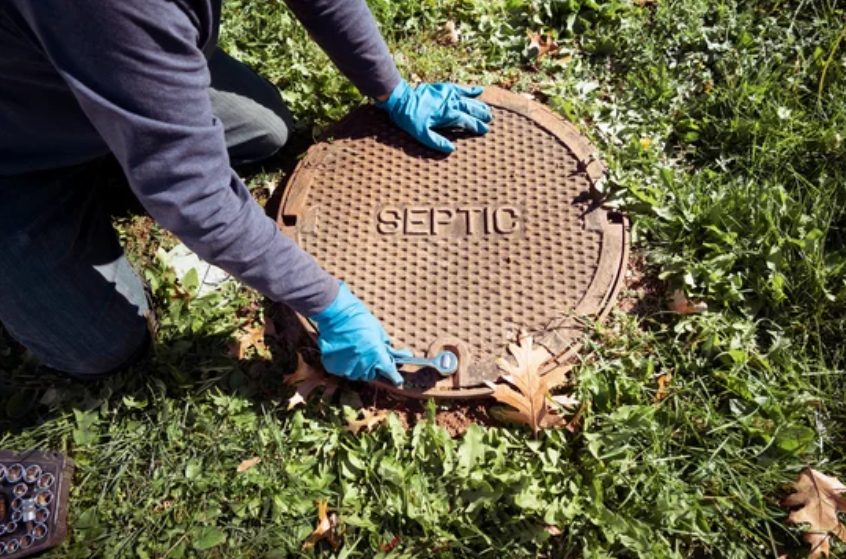The Connection Between Septic and Well Water Systems: Tips for Safe Management
Septic and well water systems often coexist on the same property, particularly in rural and suburban areas. While both systems offer independence from municipal utilities, their proximity and interdependence can create unique challenges. Proper management of septic and well systems are essential for ensuring safe drinking water and protecting your property’s environment.
In this article, we’ll explore the connection between septic and well water systems, potential risks, and practical tips for managing both systems safely.
Understanding the Relationship Between Septic and Well Systems
Septic systems are designed to treat and dispose of wastewater from your home. Wastewater flows from your house into a septic tank, where solids settle at the bottom, and liquids are filtered through a drain field into the soil. The soil acts as a natural filter, removing contaminants before they reach groundwater.
Well water systems, on the other hand, draw water from underground aquifers for household use. Because both systems rely on the same subsurface environment, their interaction can pose risks. If a septic system malfunctions or is improperly maintained, contaminants such as bacteria, nitrates, and viruses can seep into the groundwater, potentially affecting your well water quality.
Risks of Poorly Managed Systems
The proximity of a septic system to a well is a critical factor. Here are some common risks associated with mismanaged systems:
- Groundwater Contamination:
- A failing or overloaded septic system can release untreated waste into the ground, contaminating nearby aquifers.
- Contaminants like E. coli, nitrates, and phosphates can make well water unsafe for drinking.
- Health Hazards:
- Consuming contaminated water can lead to gastrointestinal illnesses and long-term health issues.
- Environmental Impact:
- Poorly managed systems can harm local ecosystems, affecting plant and animal life dependent on clean water sources.
- Legal and Financial Consequences:
- Property owners may face fines or costly repairs if their septic system causes environmental damage.
Tips for Safely Managing Septic and Well Systems
Proper maintenance and care of both systems are vital to preventing problems and ensuring safe, clean water. Here are some essential tips:
- Know the Safe Distance:
- Ensure that your well is located at least 50-100 feet away from your septic tank and drain field. Local regulations may dictate specific distances.
- Avoid placing your well downhill from the septic system to prevent contaminants from flowing toward the well.
- Conduct Regular Inspections:
- Have your septic system inspected by a professional every 3-5 years to ensure it is functioning correctly.
- Test your well water annually for bacteria, nitrates, and other potential contaminants.
- Pump Your Septic Tank Regularly:
- Regular pumping (every 3-5 years) prevents solids from overflowing and clogging the drain field, reducing the risk of contamination.
- Be Mindful of What You Flush:
- Avoid flushing non-biodegradable items, grease, or hazardous chemicals, as these can damage your septic system and increase the risk of contamination.
- Manage Water Usage:
- Excessive water usage can overload your septic system, causing untreated wastewater to leak into the ground. Spread out laundry loads and fix leaks promptly.
- Maintain the Drain Field:
- Keep the area above your drain field clear of heavy objects, trees, and shrubs to prevent root intrusion and soil compaction.
- Install a Backflow Prevention Device:
- A backflow prevention device can protect your well water system by stopping contaminants from flowing back into the well.
- Seal Abandoned Wells:
- Properly seal any unused wells on your property to prevent them from becoming a pathway for contaminants.
Signs of Potential Problems
Watch for these warning signs that your septic or well system may need attention:
- Foul odors near the septic tank or drain field
- Slow drains or frequent backups in your home
- Unusual changes in well water taste, smell, or color
- Soggy areas or standing water near the drain field
If you notice any of these issues, contact a professional immediately to assess the situation and recommend solutions.
Partner with Professionals
Managing septic and well systems is not a one-size-fits-all endeavor. Factors such as soil type, property layout, and water table depth can influence system performance. Working with experienced professionals like Colson’s Septic Services ensures that both systems are installed, maintained, and monitored effectively.
Our team offers comprehensive septic system inspections, maintenance, and repair services to keep your property safe and your water clean. We can also recommend trusted partners for well water testing and maintenance.
Conclusion
Your septic and well systems play a critical role in maintaining a healthy, self-sufficient property. By understanding their connection and taking proactive steps to manage both systems, you can protect your water quality, avoid costly repairs, and safeguard your family’s health.
If you need assistance with your septic system, contact Colson’s Septic Services today. Let’s work together to keep your property safe and your water clean.


